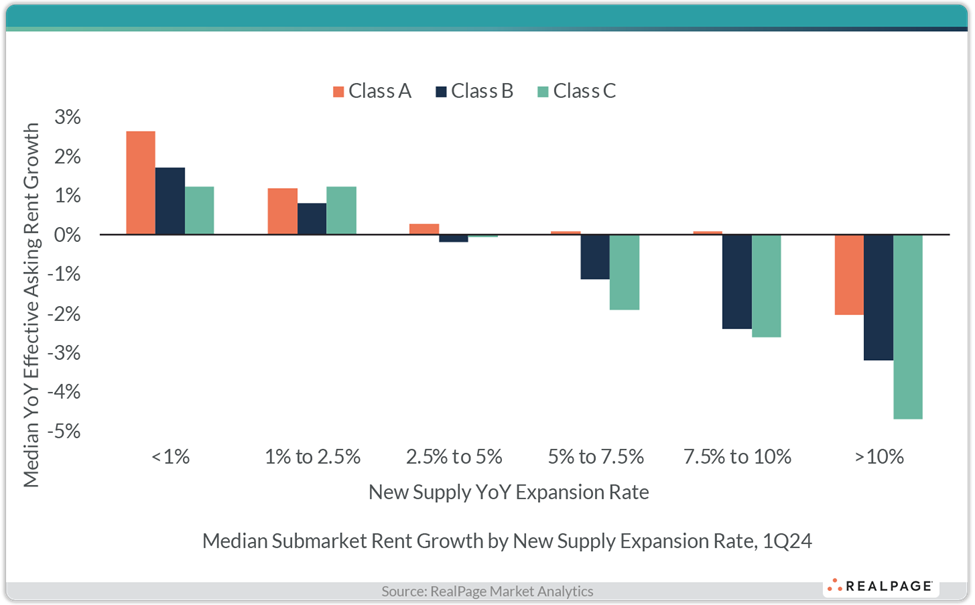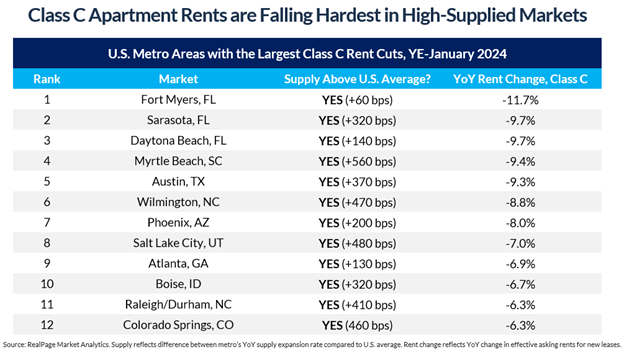Why Your Apartment Building is Like a Michael Jordan Rookie Card – Insights on Chicago’s New Supply Shortage

CHICAGO: A LOW SUPPLY, HIGH DEMAND MULTIFAMILY MARKET
The City of Chicago has boasted one of the strongest rental markets in the country for the past 24 months. In 2024, according to Costar, Chicago’s rent growth was almost three times greater than the national average and the only major city to record a decrease in vacancy rate. By comparison, in the city of Austin, Texas, once thought to be a foolproof multifamily market for investors, apartment vacancy has increased by 390 basis points while rents have plummeted by approximately 10%.
Why is Chicago’s apartment market so strong? There are a multitude of reasons for this, however experts seem to agree that the predominant cause for the city’s explosive rent growth is the lack of new apartment deliveries throughout the city. This is a trend that is expected to worsen in the coming years as many analysts predict Chicago multifamily deliveries will decrease from thousands of units per year on average in the 2010s and early 2020s to just a few hundred in both 2025 and 2026. Additionally, an overwhelming majority of deliveries in 2024 to 2026 will be in just a few submarkets including the West Loop and Streeterville. There is little to no product of any scale being delivered in the lower density neighborhoods throughout the city.
DOES BUILDING NEW CLASS A APARTMENTS LOWER THE COST OF EXISTING CLASS B & C APARTMENTS FOR RENTERS? YES!
There is a clear indirect correlation between apartment rents and apartment supply across the country. Class B & C apartment rents are decreasing the fastest in markets that are expanding their supply of multifamily housing by at least 5% (see graph below from RealPage Market Analytics). For example, in cities that are adding the most supply (think Austin, Phoenix, Salt Lake, Boise), Class B & C rents are decreasing even more rapidly than the Class A apartments that those new deliveries are competing with. This is likely because the new supply of luxury apartments is attracting tenants from B & C properties who are upgrading their living situation and causing higher turnover at Class B & C apartments.
According to rental housing economist Jay Parsons, there are 12 markets where Class C rents are falling by at least 6% year over year. Every one of these markets are expanding their supply of apartments faster than the national average. Cities in Florida which saw the strongest increase in rents from 2020-2022 are now seeing the fastest declines in rental rates with submarkets such as Fort Myers, Sarasota & Dayton Beach posting Class C rent declines between 9.7% & 11.7%. In larger cities such as Austin, Phoenix and Atlanta where incoming supply far exceeds the national average, Class C apartment rents are decreasing at 7%-9% YOY, their fastest pace since the financial crisis (see graph below from RealPage Market Analytics).
Conversely, rents are increasing across all classes of multifamily in Chicago and in other markets that are adding less than 1% to their housing stock annually. This clearly shows an indirect correlation between apartment supply and apartment rents. Mr. Parson’s nails it when he says “when you build luxury apartments at scale, you will put downward pressure on rents at all price points.”


IS THIS A POSITIVE OR NEGATIVE FOR CHICAGO MUTLIFAMILY OWNERS?
If you own a Michael Jordan rookie card in mint condition, do you want the manufacturer to suddenly release thousands more of them?
If you own Bitcoin, would you be excited to hear that millions more of them are being released into circulation?
If you own a beautiful vintage courtyard building on the north side of Chicago, do you want the city to suddenly announce that it’s going to build thousands more just like it?
NO, YOU DO NOT! The lack of incoming supply is undoubtedly a positive for multifamily owners throughout the City of Chicago. Home ownership rates in the city have decreased since 2010, bringing a higher percentage of people into the rental market than in the decades before. The cost of buying and maintaining a home or condominium has skyrocketed in the last 24 months due to higher borrowing and insurance costs, further increasing the pool of renters.
Chicago renters are already absorbing more apartments than have been built in recent years and construction of new units is expected to plummet over the next 24 months.
What does all of this add up to? Increasing demand combined with nearly no new supply.
That northside vintage courtyard building might be more similar to that Michael Jordan rookie card than you thought!